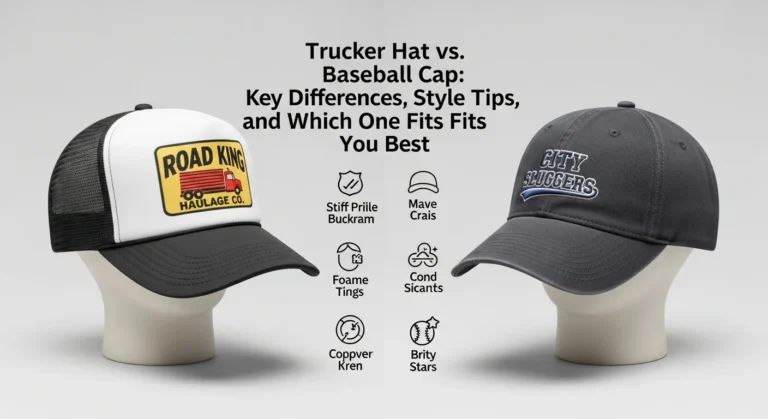Creating an own underwear line from scratch may seem challenging, but it is manageable by following a clear and practical process. The key is to focus on understanding the market, defining a unique brand, and carefully designing each product with comfort and style in mind. Turning your idea into reality depends on breaking down the journey into simple, actionable steps—from choosing your target audience to working with reliable manufacturers and planning a strong launch.

Success in the underwear business requires more than just a good product. It involves careful research, testing prototypes, and building a brand that connects with customers. By paying attention to quality, material choices, and presentation, anyone can develop a collection that stands out in a competitive market.
This guide walks through essential phases like design, sampling, production, and marketing to help readers create an underwear line that meets demand and grows over time. It offers clear advice for navigating each step while keeping costs and customer needs in balance.
Key Takeways
- Success starts with knowing the target market and brand focus.
- Product quality and thoughtful design are crucial for customer appeal.
- A solid plan and collaboration with manufacturers ensure smooth production and launch.
Understanding the Underwear Market

The underwear market includes many styles, fabrics, and customer needs that shape product demand. Success depends on clear market research and targeted product development based on customer preferences and trends.
Identifying Niche Opportunities
Finding a niche is essential for standing out in the crowded underwear market. It begins with pinpointing specific customer groups or product gaps. For example, some brands focus on men’s underwear with new fits like boxer briefs or environmentally friendly fabrics. Others target women with comfortable lingerie or specialty items such as maternity briefs or seamless thongs.
Research helps spot underserved markets and emerging trends. Tools like Google Trends and competitor analysis reveal which products, such as boxer briefs or undershirts, are growing in popularity. A niche that responds to comfort, sustainability, or style needs often appeals more strongly to customers and reduces direct competition.
Defining Your Brand Identity

A strong brand identity sets an underwear line apart from competitors and connects with the right customers. It combines visual elements and the personality behind the brand, making it instantly recognizable and meaningful. Choosing the right name and creating a distinctive logo are key parts of shaping how the underwear brand is seen and remembered.
Choosing a Memorable Brand Name
The brand name is often the first impression customers get. It should be easy to say, spell, and remember. For an underwear brand, the name must also fit the style and message of the products, whether that’s comfort, inclusivity, luxury, or sustainability.
There are several ways to approach this:
- Create a new word that hints at comfort or confidence.
- Use a metaphor or suggestive term related to softness or fit.
- Combine words relevant to underwear or body positivity.
- Consider the availability of domain names and social handles.
Checking that the name isn’t already used by other underwear brands is essential. A unique and clear brand name builds trust and helps the underwear line stand out in a crowded market.
Creating a Distinctive Logo
A logo visually represents the underwear line and should reflect its core values and style. The logo’s colors, shapes, and fonts work together to convey the brand’s personality.
Key points in designing a logo include:
- Simplicity: A clean logo is easier to recognize and reproduce.
- Relevance: It should connect to the brand’s focus on comfort, style, or empowerment.
- Versatility: The logo must look good in different sizes and on various materials, such as tags, packaging, and websites.
- Color choices: Use colors that evoke the right emotions—soft pastels for comfort, bold tones for confidence.
Working with a professional designer or using design tools helps ensure the logo is unique and fits well with the underwear brand’s identity.
Designing Your Underwear Collection

Creating an underwear collection requires careful attention to style, fit, and materials. Each decision impacts comfort, production, and customer appeal. Clear designs and specifications help move the product from concept to prototype smoothly.
Sketching Styles and Fits
The process begins with sketching various underwear styles such as briefs, boxers, boxer briefs, thongs, lingerie, and undershirts. Sketches should explore different cuts and fits to address the target audience’s needs. For example, boxer briefs offer a balance of support and coverage, while thongs focus on minimalism.
Designers often create both hand-drawn and digital sketches to visualize proportions and details. These sketches guide prototyping by providing a clear picture of the intended product. Multiple style options can be sketched to compare shapes, waistbands, and leg openings.
Focusing on comfort during design is critical. Features like wide waistbands, stretch fabrics, and tagless labels can improve the user experience. This early creative work lays the foundation for further refinement during sample development.
Preparing a Tech Pack
A tech pack is essential for communicating design details to manufacturers. It includes technical drawings, measurements, materials, stitching instructions, and construction methods. Providing a complete tech pack reduces errors and speeds up prototyping.
This document must specify elements such as fabric weight, waistband type, colors, and trims. Clear notes on stitching quality and pattern layout assist the factory in creating accurate samples. The tech pack serves as the blueprint for every item in the collection.
Working closely with manufacturers during this stage ensures that designs are production-ready. A strong tech pack helps maintain consistency across sizes and styles and supports quality control throughout manufacturing.
Selecting Fabrics and Materials
Choosing fabrics is key to the underwear’s comfort, durability, and appeal. Popular materials include cotton for breathability, modal and bamboo for softness, and lace for lingerie appeal. Each fabric impacts the look and feel of the final product.
Material selection depends on target customers and the underwear type. For example:
- Briefs and boxer briefs often use cotton blends for support.
- Thongs and lingerie benefit from delicate lace or smooth microfiber.
- Undershirts require lightweight, breathable fabrics.
Sustainability and performance also influence material choices. Stretchiness and moisture-wicking properties are important for activewear styles. Manufacturers with material sourcing expertise can help select optimal fabrics that balance cost and quality.
Prototyping and Sample Development

Creating a prototype is a crucial step that turns a design concept into a physical product. It allows the underwear line creator to test fit, fabric, and functionality before full production. This phase involves close collaboration with designers and careful evaluation of samples to ensure the final product meets quality and design expectations.
Working with Designers
Designers translate ideas into detailed sketches and technical packs that guide prototype creation. They specify materials, stitching, sizing, and other important features. Clear communication with designers is essential to avoid misunderstandings that could delay samples or increase costs.
Prototypes often require several revisions. Designers review each sample and suggest improvements related to comfort, durability, and fit. They also ensure the style aligns with the brand’s vision.
Choosing an experienced underwear manufacturer at this stage is helpful. Such manufacturers can offer advice on fabric choices and construction techniques to optimize wearability and production efficiency.
Evaluating and Refining Prototypes
After receiving the first sample, thorough inspection is necessary. The underwear’s stitching, elasticity, waistbands, and overall fit should be checked against the technical pack specifications.
It is normal to find flaws or areas needing adjustment. These might include uneven seams, incorrect sizing, or unsuitable fabric texture. Documenting all issues clearly and updating the tech pack ensures the next prototype addresses them correctly.
Multiple rounds of refinement might be needed. Each improved sample should get tested for comfort and durability. Working closely with the underwear manufacturer during feedback loops helps prevent repeated mistakes and speeds up final approval before mass production.
Sourcing Suppliers and Production Planning

Starting an underwear line requires careful planning to find the right partners and set realistic production schedules. This ensures consistent product quality and timely delivery to the market. Managing supplier relationships, choosing a trusted manufacturer, and organizing production timelines are key steps.
Finding Reliable Suppliers
Reliable suppliers are crucial for quality fabrics and materials. The underwear business needs suppliers who offer consistent fabric quality, timely deliveries, and competitive pricing. Research local and international fabric suppliers known for cotton, microfiber, and lace suitable for underwear.
Request samples to check material quality and durability. Assess supplier certifications for ethical practices and compliance with industry standards. Use a clear checklist covering price, lead time, and minimum order quantities to compare options objectively.
Building strong communication channels with suppliers helps avoid delays and misunderstandings. Document agreements on delivery schedules and payment terms to maintain a smooth supply process.
Selecting the Right Manufacturer
Choosing an underwear manufacturer affects product quality, cost, and brand reputation. Look for manufacturers experienced in underwear or intimate apparel specifically, not just general clothing manufacturers.
Verify their production capacity matches your order volume. Visit production facilities if possible to inspect machinery and working conditions. Confirm they can meet quality standards and use appropriate machinery for stitching, cutting, and finishing underwear.
Request references from other clothing brands to validate reliability. Negotiate terms around pricing, quality checks, and turnaround times before signing contracts. A good manufacturer will collaborate on prototypes and allow adjustments before full production.
Establishing Production Timelines
A clear production timeline helps manage expectations and avoid delays. Calculate time needed for material sourcing, prototype approvals, production runs, quality inspections, and shipping.
Break the timeline into stages with deadlines: sample approval, initial production, quality review, and fulfillment. Factor in buffer time for unexpected delays, especially with overseas manufacturers.
Use project management tools or shared calendars to track progress regularly. Communicate with suppliers and manufacturers to update schedules as needed. Align production timing with marketing plans to launch the underwear line on schedule.
Building a Business Plan and Launch Strategy

Creating a clear plan helps set a strong foundation for an underwear line. This includes outlining the business goals, figuring out the right prices, and managing how much stock to keep.
Crafting a Comprehensive Business Plan
A business plan defines the underwear line’s purpose and path. It should include a detailed description of the products, target customers, and market research. The plan must also explain marketing methods and how the business will make money.
Including financial projections, such as expected costs, sales, and profits, is key. This helps track progress and secure funding if needed. Identifying key partners, suppliers, and any resources required ensures smoother operations.
The plan acts as a roadmap, guiding each step from startup to growth, helping identify challenges early.
Developing a Pricing Strategy
Pricing sets the tone for the underwear line’s market position. It must cover production costs, including materials and labor, to ensure profitability. She or he should research competitors’ prices and consider what customers are willing to pay.
Pricing can follow strategies like cost-plus (adding a markup), value-based (based on customer perception), or penetration pricing to attract buyers quickly. Discounts and promotions should also be planned carefully to avoid hurting profits.
Clear pricing balances customer appeal and business sustainability.
Planning Inventory Management
Good inventory management prevents running out of stock or holding too much. It involves estimating demand, tracking sales, and ordering materials on time.
The underwear business should use methods like just-in-time (ordering only what is needed) or safety stock (extra inventory to meet sudden demand). Monitoring fast-selling styles versus slow movers can guide future purchases.
Proper inventory planning reduces costs and ensures customer orders are filled promptly, which is important for brand reputation.
Establishing Your Online Presence

Creating a solid online presence is essential for an underwear line to reach customers and build trust. This involves building a website that looks professional, using social media effectively, and engaging customers through email and content marketing.
Website Development Basics
The website serves as the main online hub and should clearly show the brand’s identity. It needs to include essential pages like product listings, an about section, and easy checkout options.
Choosing the right platform is key. Squarespace and Shopify are popular for beginners because they offer simple drag-and-drop tools and built-in e-commerce features. Shopify is especially useful for selling products online.
The website should have mobile-friendly design, fast loading times, and secure payment options. Clear product images and descriptions help buyers make decisions. Registering a domain name that matches the brand is important for professional appearance and better search rankings.
Leveraging Social Media Marketing
Social media is a powerful tool to create awareness and attract customers. Choosing platforms like Instagram, TikTok, and Facebook helps reach different audiences with visual content.
She or they should focus on posting high-quality photos and short videos that showcase the underwear line’s style and fit. Consistency is important, so having a content calendar for regular posts helps.
Engaging with followers through comments, polls, and stories builds community loyalty. Using relevant hashtags increases discoverability. Paid ads on these platforms can target specific groups to grow reach quickly.
Implementing Email and Content Marketing
Email marketing keeps customers informed and encourages repeat purchases. Collecting emails through the website with signup offers, like discounts, helps build a subscriber list.
Sending regular newsletters with product updates, sales, and style tips keeps the brand top of mind. Emails should be clear and visually appealing.
Content marketing includes writing blog posts or creating videos about underwear care, trends, or behind-the-scenes looks. This content adds value and improves search engine ranking. Combining email and content marketing strengthens customer relationships and drives sales.
Promoting and Growing Your Underwear Brand

To succeed, an underwear brand needs a clear plan to reach the right customers and keep them coming back. Effective promotion and brand loyalty rely on targeted marketing efforts and strong customer relationships.
Creating a Marketing Strategy
A solid marketing strategy starts with identifying the ideal audience. The brand must focus on customers who value its unique features, such as sustainability, comfort, or design style.
Key channels include social media platforms like Instagram and TikTok, where visual content and influencer partnerships can boost visibility. Email marketing helps maintain contact with interested buyers and drives repeat sales.
Paid ads should target platforms used by the specific niche. Tracking results regularly allows the brand to adjust campaigns to lower costs and increase impact.
Quality product photos and clear messaging about what sets the underwear apart are crucial. This helps customers understand the value and feel confident in their purchase.
Building Brand Loyalty
Brand loyalty develops through consistent quality and customer engagement. Delivering comfortable, durable products meets expectations and encourages positive reviews.
Offering perks such as discounts for repeat customers, referral programs, or exclusive early access to new designs builds a sense of community.
Regular communication—through newsletters, social media updates, or personalized messages—makes customers feel valued. Responding quickly to inquiries or concerns boosts trust.
Packaging can also strengthen loyalty. Eco-friendly or stylish packaging enhances the unboxing experience and reinforces the brand’s values.
By combining these tactics, the underwear business can create returning customers and positive word of mouth, fueling long-term growth.
Frequently Asked Questions
What are the initial steps to consider when starting an underwear brand?
They should begin by researching the market and defining their target niche. This helps focus on specific customer needs like comfort, style, or sustainability.
Next, designing the collection with attention to fit, fabric, and style is crucial. Early sketches and prototypes set the foundation for the product.
How to source materials for creating a high-quality underwear collection?
It is important to select fabrics that match the brand’s vision, such as cotton, bamboo, or modal. Quality, comfort, and sustainability are key factors.
They can work with suppliers who provide samples to test texture and durability. Building good relationships with material providers ensures consistent supply.
What are the necessary legal requirements for launching an underwear line?
Registering the business and trademarking the brand name are fundamental legal steps.
They must also comply with textile labeling laws, including care instructions and fiber content. Understanding import/export rules is important if manufacturing or selling internationally.
Can you outline the process of finding and working with a reliable manufacturer?
Research manufacturers with experience in underwear production and low minimum order quantities.
Communicating clearly through a tech pack or specification sheet helps avoid errors. Sampling phases allow adjustments before large-scale production.
Reliable manufacturers often offer quality control and packaging services, which improve product consistency.
What is the best approach for pricing my underwear products to ensure profitability?
Calculate all costs: materials, production, branding, marketing, and shipping.
Apply a markup that covers expenses and leaves a profit margin, typically between 50% to 70%. Competitor pricing and customer willingness to pay should guide the final price.
How do I effectively market and sell my underwear line to reach my target audience?
Building an eCommerce site with detailed product photos and descriptions is essential.
Using social media, influencer partnerships, and email campaigns helps attract buyers. Clear branding and packaging that reflect the product’s value improve recognition and sales.






